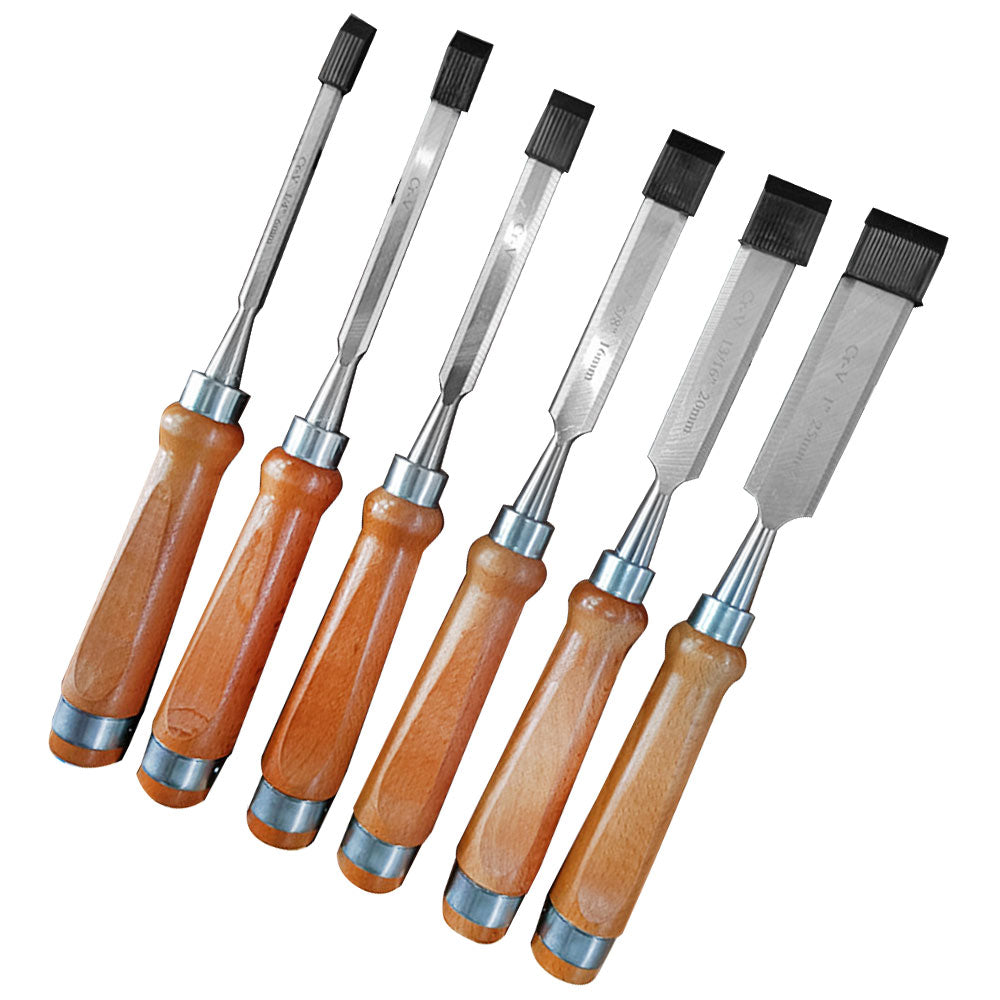A wood chisel is a versatile and essential tool in woodworking that is used for a wide range of tasks involving shaping, carving, cutting, and joinery. Here are some detailed explanations of its uses:
1. Shaping and Carving: Wood chisels excel in shaping and carving wood by removing material with precision. They are capable of creating intricate designs, decorative details, or smooth curves on wooden surfaces. Chisels allow woodworkers to sculpt and shape wood in areas where other tools may not be as effective. By using different sizes and profiles of chisels, woodworkers can achieve a variety of shapes and contours.
2. Mortising: Chisels play a crucial role in creating mortises, which are rectangular or square holes in wood used for joinery purposes. Mortises are typically used to insert tenons and create strong joints in furniture or woodworking projects. Chisels are used to accurately and cleanly cut the sides of the mortise, ensuring a precise fit for the tenon and a strong, durable joint.
3. Paring: Paring is the process of removing thin layers of wood to achieve a precise fit or smooth surface. Chisels with sharp edges are ideal for paring tasks, such as fitting joints, removing excess material, or fine-tuning the shape of a workpiece. By carefully guiding the chisel along the wood surface, woodworkers can achieve a clean and accurate finish.

CHISELS | Findbuytool
4. Trimming and Flush Cutting: Chisels are invaluable for trimming or flush cutting wood, especially in situations where a saw or other cutting tools may not be suitable. They can be used to remove excess wood, level surfaces, or create a clean, flush finish on joints or edges. Chisels provide control and precision in achieving the desired trim or flush cut.
5. Cleaning Joints: Woodworking projects often involve joining pieces of wood together, and chisels are useful for cleaning and preparing joints. After gluing, chisels can be used to remove glue residue, smooth out uneven surfaces, or clean up excess material around joints for a precise fit. This ensures that the joint is clean and ready for the next steps in the woodworking process.
6. Notching and Dovetailing: Chisels are commonly employed for notching, which involves cutting small recesses or grooves in wood. Woodworkers use chisels to create notches for various purposes, such as accommodating hardware, creating decorative features, or fitting components together. Chisels are also essential for creating dovetail joints, which are strong and interlocking joints commonly used in cabinetry and furniture making. By carefully cutting and shaping the wood with chisels, dovetail joints can be created for both functional and aesthetic purposes.
7. Sharpening and Maintenance: Wood chisels require regular sharpening to maintain their cutting performance. Over time, the cutting edge of a chisel can become dull or damaged. Woodworkers use sharpening stones or honing guides to restore the sharpness of the chisel's edge. Proper maintenance and sharpening ensure that the chisel remains in optimal condition, providing clean and precise cuts.
In summary, wood chisels are versatile tools with a wide range of applications in woodworking. Their ability to shape, carve, cut, and create joinery makes them indispensable for both fine woodworking and general carpentry tasks. By using chisels skillfully, woodworkers can achieve intricate designs, precise joints, and exceptional craftsmanship.

